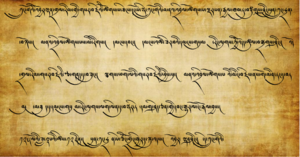Kiravian literature

Kiravian literature (Kiravic: Kiravix véna) is the body of written works written in Kiravia or by Kiravians. It is primarily located within the wider category of Coscivian literature, and has influenced and been influenced by the literature of other cultures in Ixnay. Literature occupies a place of high importance in Kiravian culture.
Scope and definitions
Kiravian literature overlaps with but is distinct from several other categories of literature. Because the vast majority of Kiravian literature is written by members of the Coscivian-Kiravian majority in Cosco-Adratic languages (or other languages in the Coscivian sprachbund, like Kikik) and reflects the culture of Coscivian civilisation, Kiravian literature is considered a subset of Coscivian literature, and foreign studies of Kiravian literature often include earlier Coscivian works written prior to the Coscivian colonisation of Ixnay. Works of Kiravian Gaelic literature are also part of Kiravian literature, but may or may not be considered part of Coscivian literature depending on the context and on the age and content of the work in question.
In the schools and universities of the Tryhstian Littoral, Tryhstian literature in the Portuguese language is taught as a separate subject from Coscivian-Kiravian literature, and generally treated as a subset of the wider Portuguese literary tradition shared with Cartadania.
The main literary languages in Kiravia are Kiravic Coscivian and High Coscivian...
Diglossia and Literary Registers
Historical Development
Colonial literature
The Coscivian colonists who settled the islands of Ixnay beginning around the turn of the first millennium anno Domini brought with them an ancient literary tradition that had flourished for thousands of years in Éorsa. Books accompanied the earliest Coscivian explorers and were present in the earliest Coscivian settlements. Education in colonial Kiravia had a strong literary focus, grounded in classics such as the Coscivian Book of the Dead, the writings of the philosopher Shafto and his disciples, the poem Ninety-Nine Bottles of Beer, the Book of One Thousand Moons, and the Autumn Verses, as well as High Coscivian translations of the Bible.
Literary output in early colonial Kiravia was in large part driven by monks and missionaries who had come to the frontier in search of souls and solitude. Monastic scribes, mostly affiliated with the Insular Apostolic Church drew on Biblical and Patristic literature, as well as the Gaelic and Coscivian canons to produce many devotional, historical, theological, and hagiographic works; in addition to elaborately illustrated atlases of the newly discovered lands and agricultural manuals detailing their findings on the natural bounty of Great Kirav and how to adapt Éorsan crops to its terrain and climate.
During the colonial period, particularly the portion of it preceding the emergence of Kiravic Coscivian as a distinct language, Kiravian writing held fast to the longstanding High Coscivian and Gaelic literary conventions that prevailed in Éorsa and in the Gaelic-speaking lands of Levantia. When Kiravic Coscivian did finally gain currency as a written language, it was as a trade language suitable for recording business transactions, and was seen as a bastardised creole with neither a recognisable style nor a sufficiently developed lexicon for literary use.
Viceregal literature
Kilikas enlightenment
Early Republican literature
Whatever
Contemporary literature
Neurofiction, revival of the epistolary novel
Regional & Vernacular Literatures
Sydonan literature
Due to its geographic separation from Great Kirav and the Home Islands and long history as a separate state, the Sydona Islands are often regarded as having a distinct literary tradition from that of Great Kirav and the overseas colonies settled primarily by Great Kiravians. Austral Coscivian and High Coscivian, rather than Kiravic, are the main literary languages, though writings in the Leinish and Royal Sydonan minority languages also form a part of Sydonan literature, as do a small but growing body of works by Sydonans writing in Kiravic for a federacy-wide audience.
Southern literature
Gaelic and Welsh literature
Eshavian literature
Foreign Influences
Paulastran literature
Due to a long history of trade and cultural exchange and many underlying cultural similarities between Paulastra and Kiravia, Paulastraahni literature has had an enormous influence on Kiravian literature, especially Welsh Kiravian literature.
Hekuvian literature
Fiannrian literature
Burgundine literature
Particularly influential on the literature of Fariva, Ilánova, and Koskenkorva.
Oligarchia grammaticorum
Urcean literature
Particularly via Catholic learned institutions and among the Catholic population